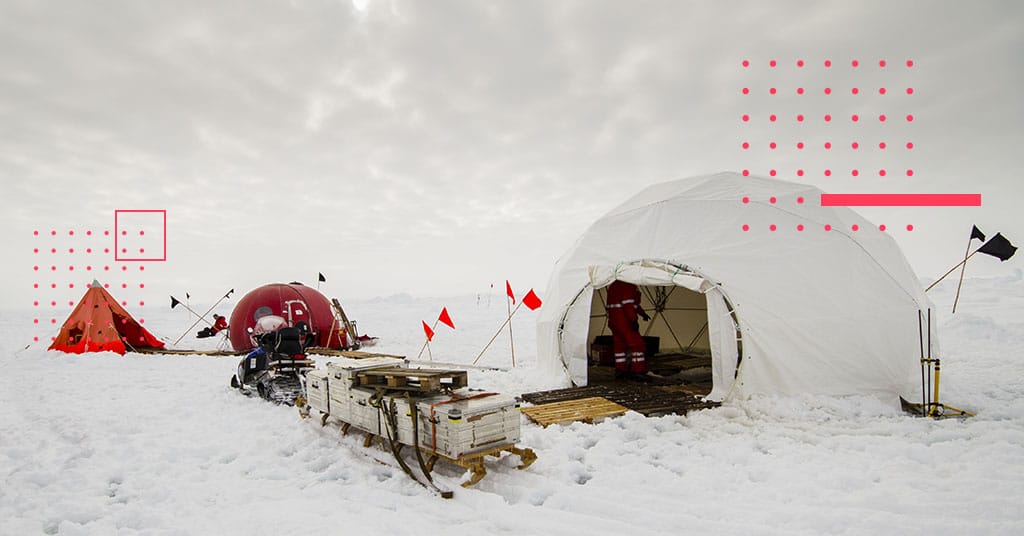New storage solutions will bring the data center to the remote edge
From stoplights to space stations, IoT, 5G, and cloud have fueled the rise of edge computing. Increasing amounts of compute and storage are deployed outside of the data center, closer to where data is captured and generated.
Today, Gartner reports, less than 10% of enterprise-generated data is created and processed outside a traditional centralized data center or cloud, and that figure could reach 75% by 2025.
At the computing or network edge – networks can be slow, intermittent, expensive, or nonexistent. The edge could be in the middle of the ocean, amid military operations in a desert, or even on a mission in space. It’s for these remote environments that a new intelligent edge computing architecture can bring the data center to the action, eliminating the hurdles of latency, cost, and even connectivity in some cases.
What does it take for storage devices at the remote edge to live, survive, and thrive in such extreme environments?
What’s different at the edge
A traditional data center is carefully provisioned with IT resources, staff, space, and carefully controlled power and cooling considerations. The edge, by contrast, introduces connectivity, environmental, and security factors.
“Edge servers provide mobility, analytics, and high-performance computing, just not in the traditional data center,” said Scott Hamilton, senior director, platforms product management and marketing at Western Digital. “It’s all about bringing the data, processing and user (whether people or things) closer together for real-time decision making and value.”

“The biggest differences at the remote edge are connectivity and distance to the data center,” said Steve Wilkins, data center infrastructure marketing at Western Digital. “Whether it’s miles at sea or off the grid in the desert, connectivity may be slow or questionable, but the workload still requires real-time analytics on-site.”
The need for speed
When data is captured at the edge, sending data back to the cloud can be painfully slow or prohibitively expensive.
“In the commercial sector, for applications like seismic, industrial, telecom, or exploration on offshore oil rigs, there’s a lot of data to collect,” said Hamilton. “In some cases it is literally faster to fly the data back on a helicopter than try to transfer huge volumes of rich data back from locations off the grid.”
But obviously helicopter delivery is not always an option and sending vast amounts of data to the data center can overwhelm a remote network. Additionally, some use cases cannot afford to wait for a response from the data center.
“The ability to process data locally and transfer only the results back to a central data center can significantly reduce network traffic,” said Wilkins. This is ideal for an exploration at sea or a telescope positioned high atop a mountain, which in some cases can only connect via a satellite link, and connectivity can be spotty.
An edge server enables processing at the remote edge, eliminating the need (and resulting latency) to send data back to the cloud or enterprise data center.
Safe, stable data in environmental extremes
In addition to distance, edge devices — and users — deployed in these locations face a variety of environmental elements as opposed to the pristine and predictable data center.
“It’s all about what kind of environment (it is) and how the device is going to get there,” said Wilkins. “Whether you need to air-drop an edge server to a military operation in the desert or to a remote exploration site at sea, ingress protection against water, dust, and debris ensures the unit will not be damaged.”
The ability to withstand shock and vibration when transported aboard a moving vehicle or aircraft is also important outside of the data center. Even air pressure differences when changing altitude can impact a device.
“For use cases where there is highly sensitive data, such as a military battlefield or a crime scene, an edge device should meet military standards for security with a cryptographic module and a tamper-evident enclosure,” said Hamilton.
To meet these stringent military standards Western Digital has developed Ultrastar® Edge-MR, a rugged, MIL-spec version of its Ultrastar® Edge server.
In addition to protecting against tampering or otherwise getting to the data, protection against external electromagnetic interference (EMI) events, either natural or malicious, is critical. Internal EMI screening is also important to reduce the likelihood of detection.
Edge servers bring processing to the edge
“We have an insatiable appetite for data that’s instantaneous, wherever that may be,” said Hamilton. “Whether stationed in the jungle or the ocean, today’s users want to run the same applications with the same storage and processing power as if they are at their desk at headquarters.”
That appetite may spur tremendous growth in this industry. Analyst firm Omdia expects server deployments at edge locations to double through 2024, totaling an estimated nearly five million units, and more compute power is needed.
The growth in data creation at the edge and the opportunities to extract value from that data is connecting people and technology like never before. Organizations are extending and expanding the possibilities of the cloud to remote locations. With billions of connected things around the world, edge servers play a critical role to process and transform data between core data centers (public, private, and hybrid) and a diverse set of people, connected things, and workloads at the edge.
The edge is getting edgier.



